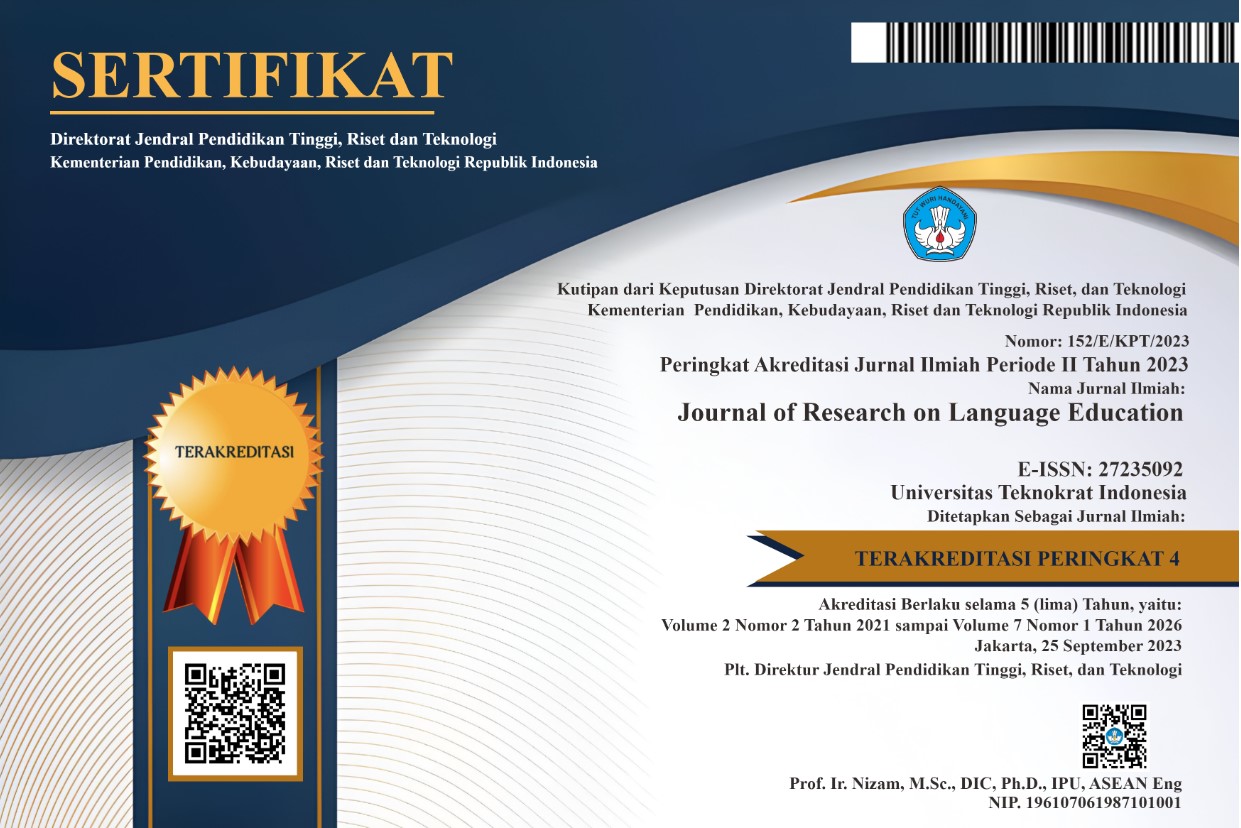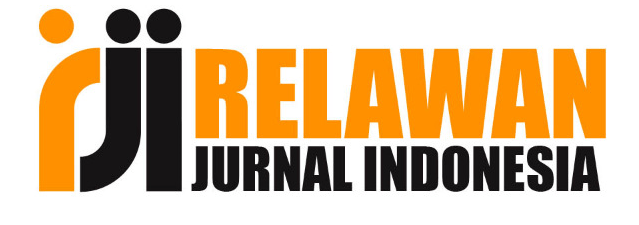UTILIZING WHATSAPP APPLICATION AS A LEARNING MEDIA IN THE ONLINE ENGLISH CLASS
Abstract
WhatsApp application as the foremost prevalent application for the education field is helpful to support the online teaching and learning process. During the Covid-19 pandemic, WhatsApp application is one of the media to help students in the learning process in online classes. WhatsApp gives useful highlights such as content, call, send videos, sounds, links, locations, documents, and pictures. The purpose of this study is to know if the use of WhatsApp applications enhances English learning during online classes. In this research, a descriptive qualitative method was employed, and to gather the data the researcher used a questionnaire to collect the data. The findings supported the use of WhatsApp applications to help students in learning English during online classes, using WhatsApp to increase students’ enthusiasm for learning English, and using WhatsApp helped students to develop English skills. In conclusion, the use of WhatsApp applications is helpful for students in learning English during online classes.
Keywords
Full Text:
PDFReferences
Afsyah, S. (2019). WhatsApp Application in English Language Teaching (ELT) Context: Media to Describe People. Utamax: Journal of Ultimate Research and Trends in Education, 1(1), 23-28.
Aldeman, S. (2017). 5 Ways to Use WhatsApp in the ELT Classroom. Pearson English. Retrieved July 10, 2018, from https://www.english.com/blog/5-ways-usewhatsapp-elt-classroom/
Amry AB. The impact of WhatsApp mobile social learning on the achievement and attitudes of female students compared with face-to-face learning in the classroom. European Scientific Journal. 2014; 10(22):116-36.
Bere A. A Comparative study of student experiences of ubiquitous learning via mobile devices and learner management systems at a South African university. Proceedings of the 14th Annual Conference on World Wide Web Application; Durban. 2012.
Bouhnik, D., & Deshen, M. (2014). WhatsApp Goes to School: Mobile Instant Messaging between Teachers and Students. Journal of Information Technology Education: Research, 13, 217-231.
Church, K., de Oliveira, R. What’s up with WhatsApp? Comparing mobile instant messaging behaviors with traditional SMS. Proceedings of the 15th International Conference on Human-computer Interaction with Mobile Devices and Services: 2013. P 352-61.
Cohen, L., Manion, L., & Morrison, K. (2018). Research Method in Education (8th Edition). New York: Routledge.
Cresswell, J. W, (2009). Research Design: Qualitative, Quantitative, and Mixed Method Approach (3rd Edition). United States of America: SAGE Publications, Inc.
Gon, S., &Rawekar, A. (2017). Effectivity of E-Learning through WhatsApp as a Teaching Learning Tool. MVP Journal of Medical Sciences, 4(1), 19. https://doi.org/10.18311/mvpjms/0/v0/i0/8454
Goodwin, et al. Use of tablet technology in the classroom. State of New South Wales (Australia): The NSW Curriculum and Learning Innovation Centre: 2012. Available from: www.clic.det.nsw.edu.au
Hamad, M.M. (2017). Using WhatsApp to Enhance Students’ Learning of English Language “Experience to Share.” Higher Education Studies, 7(4), 74. https//doi.org/10.5539/hes.v7n4p74
Jasrial, D. (2017). Utilizing WhatsApp Application For Teaching English Language: Why And How? Isbn: 978-602-70378-2-3, 1(1), 151-157.
Jumiatmoko. (2016). WhatsApp Messenger dalam Tinjauan Manfaat dan Adab. Wahana Akademika, 3(1), 51-66.
Kheryadi. (2017). The Implementation of “WhatsApp” as A Media of English Language Teaching. LOQUEN, 10(2), 1-14.
Mandasari, B. (2020) The Impact of Online Learning toward Students’ Academic Performance on Business Correspondence Course. EDUTEC: Journal of Education and Technology, 4(1), 98-110. https://doi.org/10.29062/edu.v4i.74
Nihayati, A. & Indriani, L. (2021). EFL Students’ Perspective on Whatsapp as Media of Online Teaching and Learning in COVID-19 Pandemic. Journal of Research on Language Education, 2(1), 44-52.
Nuraeni, C., & Nurmalia, L. (2020). Utilizing WhatsApp Application in English Language Learning Classroom. Metathesis: Journal of English Language, Literature, and Teaching, 4(1), 89. https://doi.org/10.31002/metathesis.v4i1.2289
Pustika, R. (2020). Future English Teachers’ Perspective towards the Implementation of E-Learning in the Covid-19 Pandemic Era. Journal of English Language Teaching and Linguistics, 5(3), 383.
Sari, F. (2018). Undergraduate Students’ Attitudes To the Implementation of Whatsapp Group As Their Learning Media in the EFL Classroom. Researchgate.Net, November 2018, 0-8. https://www.researchgate.net/publication/335320213
Sari, F. M., & Oktaviani, L. (2021). Undergraduate Students’ Views on the Use of Online Learning Platforms during COVID-19 Pandemic. Teknosastik, 19(1), 41. https://doi.org/10.33365/ts.v19i.896
Sugiyono, P. D. (2012). Metode Penelitian Kuantitatif, Kualitatif, dan R&D. Bandung: Alfabeta.
Wijaya, A. (2018). Students' Responses Toward the Use of WhatsApp in Learning. Journal of Teaching & Learning English in Multicultural Contexts, 2(1), 46-55.
DOI: https://doi.org/10.33365/jorle.v4i1.2424
Refbacks
- There are currently no refbacks.

This work is licensed under a Creative Commons Attribution-NonCommercial-ShareAlike 4.0 International License.

Articles published in Journal of Research on Language Education is licensed
under a Creative Commons Attribution-ShareAlike 4.0 International License.
English Education Study Program, Faculty of Arts and Education.
Universitas Teknokrat Indonesia
Zainal Abidin Pagaralam 9-11 Bandar Lampung, Indonesia
All rights reserved.








